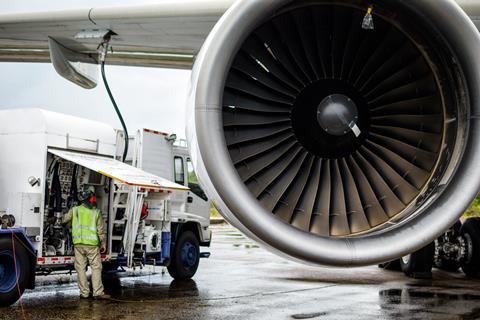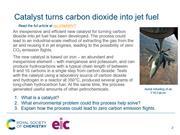The one-step catalyst that is producing long-chain hydrocarbons
Download this
A starter slide to use with 14–16-year-old students to give them a new context for their study of catalysts or ways of reducing global warming: rsc.li/2Yg7BiI

An inexpensive and efficient new catalyst for turning carbon dioxide into jet fuel has been developed by a team led by University of Oxford chemists. The researchers say the process could lead to an industrial-scale method of extracting carbon dioxide gas from the air and reusing it in jet engines, thereby mitigating the warming effects of atmospheric carbon dioxide.
The new catalyst is based on iron – an abundant and inexpensive element – with manganese and potassium, and can produce long-chain hydrocarbons from carbon dioxide in a single step and with relatively high selectivity.
Tests with the catalyst using a laboratory source of carbon dioxide and hydrogen in a reactor at 350°C produced several grams of long-chain hydrocarbon fuel. At the same time, the process generated useful amounts of petrochemicals, such as light olefins, which are usually obtained by refining crude oil.
The next stage will be to extract the carbon dioxide directly from the air and to scale it up so that usable amounts of jet fuel can be made from ‘green hydrogen’ in plants powered by renewable energy.
Read the full story in Chemistry World.
Put this in context
Add context and highlight diverse careers with our short career videos showing how chemistry is making a difference and let your learners be inspired by chemists like Misbah, a senior principle scientist who uses computers to predict which catalysts will be best at removing harmful pollutants from road-using vehicles.
Downloads
Jet fuel from CO2 starter slide
Presentation | PowerPoint, Size 0.43 mbJet fuel from CO2 starter slide
Presentation | PDF, Size 75.67 kb










No comments yet